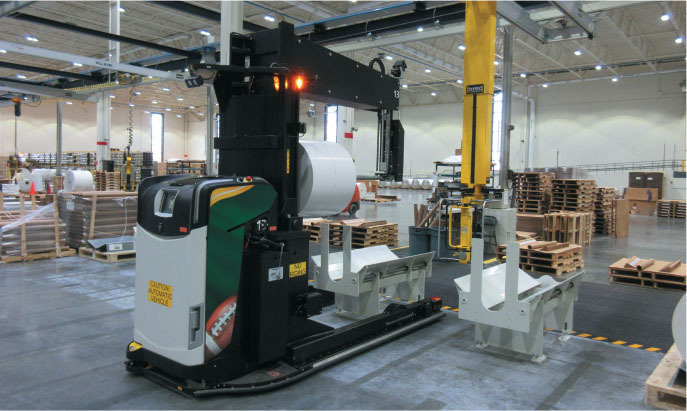Safer Handling
 As warehouses and distribution centers increasingly aim to incorporate automation into their operations, the interest in Automatic Guided Vehicles (AGVs) and Autonomous Mobile Robots (AMRs) has escalated, leading to robust growth in the industry. For MHI’s Mobile Automation Group (MAG), it is essential that growth is accompanied by an emphasis on safety. In fact, MAG leaders said, growth cannot happen without safety remaining the chief priority in the field of mobile automated vehicles.
As warehouses and distribution centers increasingly aim to incorporate automation into their operations, the interest in Automatic Guided Vehicles (AGVs) and Autonomous Mobile Robots (AMRs) has escalated, leading to robust growth in the industry. For MHI’s Mobile Automation Group (MAG), it is essential that growth is accompanied by an emphasis on safety. In fact, MAG leaders said, growth cannot happen without safety remaining the chief priority in the field of mobile automated vehicles.
“We all see this industry starting to really explode,” said Kai Beckhaus, co-vice chairman of MAG and general manager of strategy and business development of MHI member Jungheinrich. “There are a lot of new technologies entering the market. Deployment is rapidly scaling. That is only able to happen if the systems are safe and continue to be safe. Because otherwise, there would not be any acceptance of the technologies, and there would be no interest in rolling these technologies out.”
Brian Keiger, chairman of MAG, agreed, noting that for warehouse and distribution center operators, “Anytime you introduce some new technology, the first question is, ‘Is it safe for my people to operate around?’ Because if it’s not, it’s an immediate showstopper.” The efficiency gains that AGVs and AMRs can offer, after all, are lost without safety.
“I don’t think that you can decouple the growth aspect and safety,” said Keiger, who is the business development and marketing director for MHI member stow Robotics. “We want to grow, but you have to grow in a manner that’s still going to adhere to all of the safety requirements out there. Whether you’re growing at an exponential rate or whether you’re stagnant, safety still has to come first.”
Beckhaus said the safe adoption of AMRs and AGVs can be broken into three phases. The design phase is first, which involves risk assessments and weighing what equipment to implement, including considering safety standards, applications and the input of stakeholders. The second phase is the product itself, which includes working with the manufacturer on acquiring the product and managing the installation process. And the third phase is the training and awareness component.
Beckhaus said a key part of training is ensuring team members understand “these machines need to be accepted as machines.”
“People walking around them need to understand the scope, but also the limitations of functionality that a machine like that can have,” Beckhaus said.
Change management plays a crucial part in the safe adoption of AMRs and AGVs, Keiger and Beckhaus both said. Keiger said that training should begin before the technology even arrives, and it should also include educating employees about the efficiency and safety benefits of the technology and how it will help them do their jobs better. He noted that research has demonstrated that when employees receive proper training and learn how robotics tools can help them, they not only better adapt to the technology but also stay employed with an organization longer. It’s evidence that widespread buy-in has enduring advantages.
“When you’re talking about a workforce that’s already dwindling, you’re trying to save every little bit of labor that you have to begin with,” Keiger said. “An important way to do that is to do the proactive work to make sure those workers are safe, to educate them on safety and awareness, and to keep them understanding how it can benefit their operations and their work.”
Click here to read the full article.
 MHI Solutions Improving Supply Chain Performance
MHI Solutions Improving Supply Chain Performance